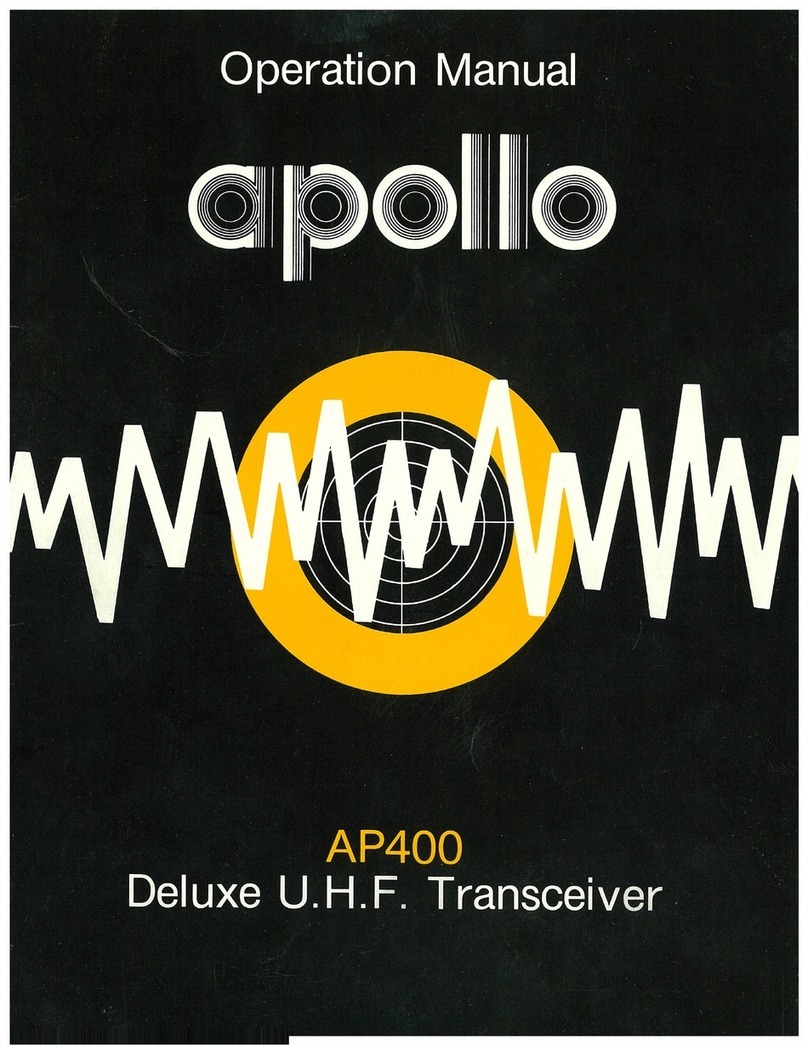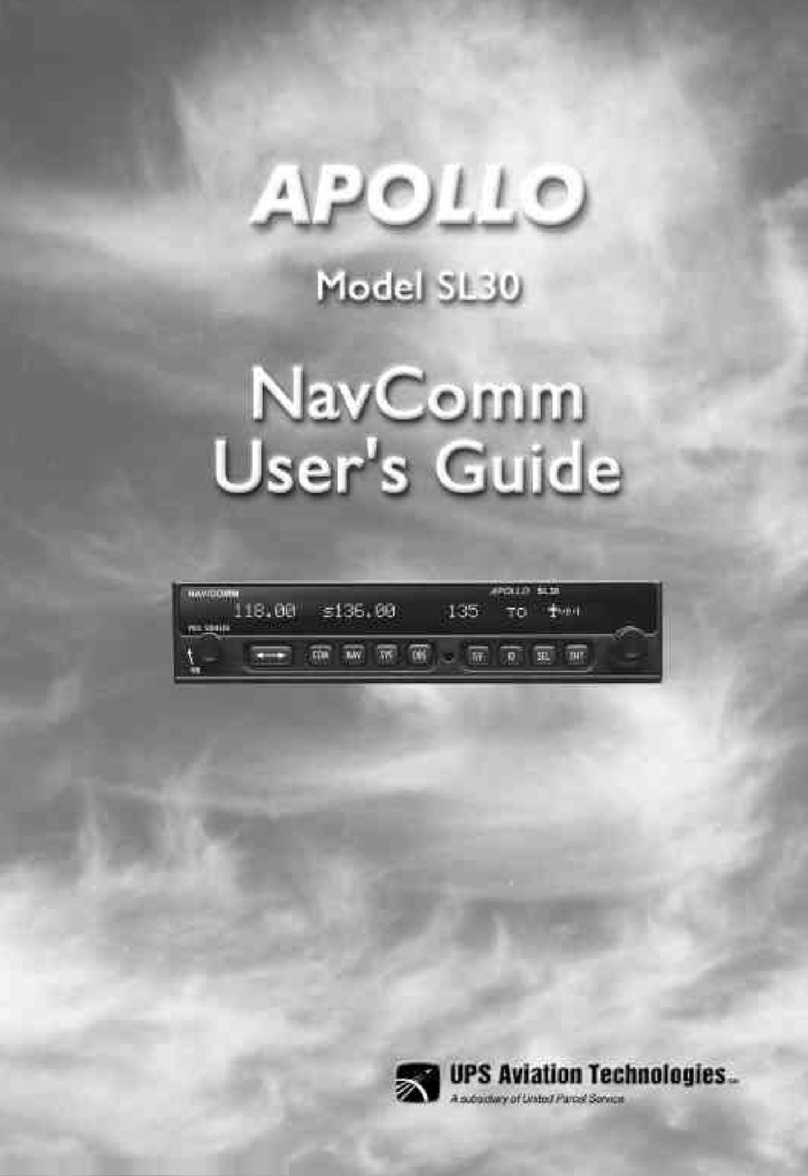
Table of Contents
Apollo SL40 Field Maintenance Manual i
TABLE OF CONTENTS
SECTION 1 - INTRODUCTION.................................................................................................1
ABOUT THIS MANUAL......................................................................................................................1
APOLLO SL40 DESCRIPTION.............................................................................................................1
FEATURES.........................................................................................................................................1
REGULATORY COMPLIANCE .............................................................................................................2
HANDLING CONSIDERATIONS ...........................................................................................................2
ESD PROTECTION..................................................................................................................................................... 2
COMPONENT HANDLING............................................................................................................................................ 3
SHIPPING CONSIDERATIONS....................................................................................................................................... 3
OTHER TOOLS AND EQUIPMENT .......................................................................................................3
TOOLS....................................................................................................................................................................... 3
TEST EQUIPMENT ...................................................................................................................................................... 3
SECTION 2 - TROUBLESHOOTING.......................................................................................5
OVERVIEW........................................................................................................................................5
ESD SAFE WORK AREA REQUIREMENTS .........................................................................................5
PRELIMINARY CHECKOUT.................................................................................................................5
SYSTEM FUNCTIONS .........................................................................................................................6
SOFTWARE VERSION DISPLAY................................................................................................................................... 6
SIGNAL STRENGTH DISPLAY...................................................................................................................................... 6
AUDIO NOISE LEVEL DISPLAY................................................................................................................................... 6
HEADPHONE LEVEL DISPLAY AND ADJUSTMENT ...................................................................................................... 7
INTERCOM SQUELCH THRESHOLD DISPLAY AND ADJUSTMENT................................................................................. 7
INTERCOM AUDIO LEVEL DISPLAY AND ADJUSTMENT.............................................................................................. 7
SIDETONE LEVEL DISPLAY AND ADJUSTMENT .......................................................................................................... 7
BASE STATION LOCKOUT MODE DISPLAY AND ADJUSTMENT................................................................................... 8
TEST MODE OPERATION...................................................................................................................9
TEST MODE ACCESS ................................................................................................................................................. 9
GENERAL OPERATION ............................................................................................................................................... 9
TEST MODE PAGE ..................................................................................................................................................... 9
DISPLAY TEST FUNCTION.......................................................................................................................................... 9
CONTROLS TEST FUNCTION .................................................................................................................................... 10
TEST SETUP ....................................................................................................................................10
EQUIPMENT TESTS..........................................................................................................................12
TRANSMITTER...........................................................................................................................13
TRANSMITTER PERFORMANCE ................................................................................................................................13
T
RANSMITTER FREQUENCY ERROR ......................................................................................................................... 13
TRANSMITTER POWER MEASUREMENT................................................................................................................... 14
TRANSMITTER MODULATION................................................................................................................................... 15
TRANSMITTER SNR (SIGNAL TO NOISE RATIO)........................................................................................................ 16
TRANSMITTER AUDIO DISTORTION........................................................................................................................... 17
RECEIVER....................................................................................................................................17
RECEIVER PERFORMANCE....................................................................................................................................... 18
SPEAKER AUDIO TEST...................................................................................................................................... 18
RECEIVER SENSITIVITY................................................................................................................................... 19
UNIT DISASSEMBLY /REASSEMBLY................................................................................................20
DISASSEMBLY ......................................................................................................................................................... 20
REASSEMBLY .......................................................................................................................................................... 21






























